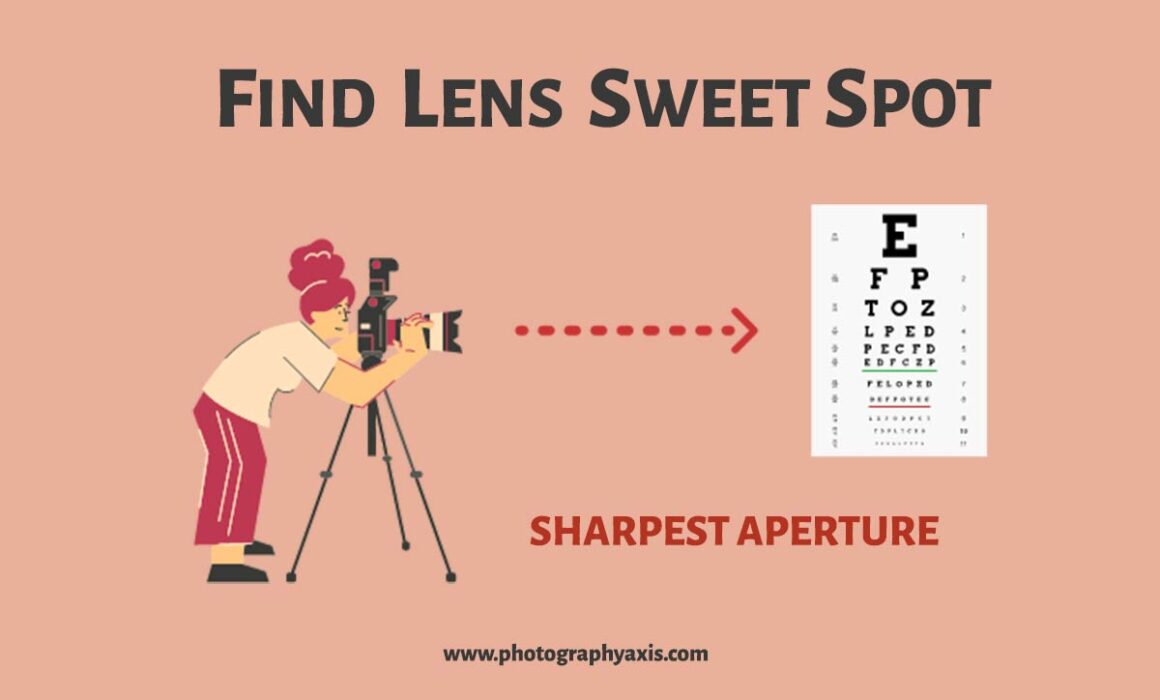How to Find Lens Sweet Spot (Sharpest Aperture)?
As a photographer, you want the subject in your image to be tack sharp every time. When it comes to a camera, the sharpness of the image is more associated with the lens than the camera body.
You can change the aperture of the lens according to the lighting and type of photography. But there is an aperture value that will help to capture the sharpest image.
In this guide, I will show you how to find the sweet spot of any lens. Knowing your lens sweet spot can help you capture crisp images.
What do you mean by Lens Sweet Spot?
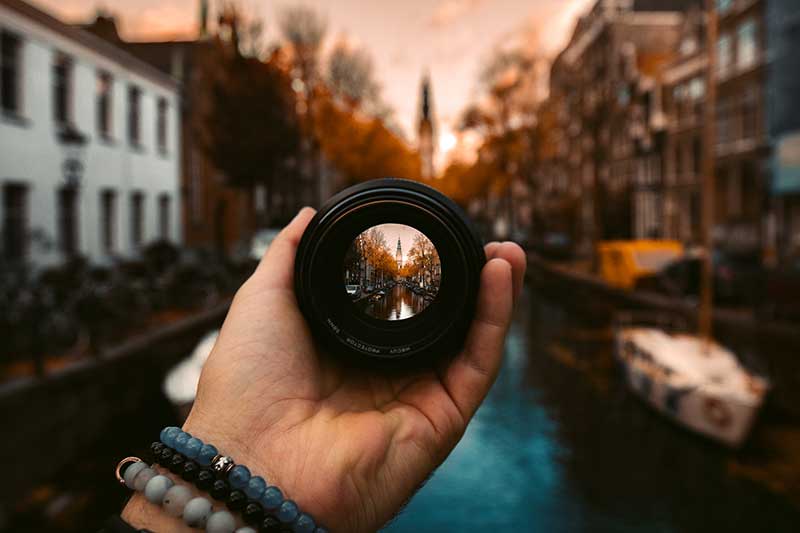
The lens sweet spot is the aperture value (f-number) of the camera lens at which you will get the maximum sharpness. If you use this “Aperture Value” for your images, you will get more sharp and crisp images.
So, as a photographer, you must find the sweet spot of all your lenses if you want to capture tack sharp images.
It is also known by other names like sweet spot aperture and f stop sweet spot.
Is Lens Sweet Spot Same for all Lenses? 🤔
Different camera lenses come with different aperture ranges.
Some are fast lenses that come with maximum aperture openings like f1.8, and f1.4. There are slow lenses that come with a maximum aperture of f5.6.
The construction of each of the lenses from different camera brands will be different. So, the lens sweet spot will not be the same for all the lenses.
Thumb Rule to Find Lens Sweet Spot 👍🏻
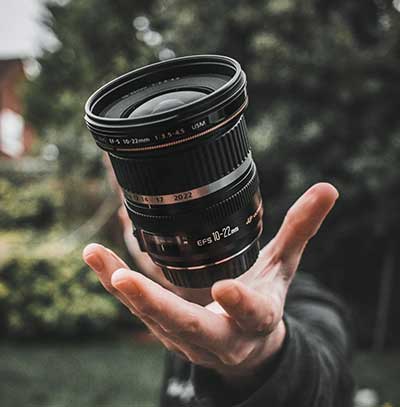
There is a thumb rule to find the sharpness of any lens. According to this rule, the sharpest aperture of the lens will be generally 2 or 3 stops from the maximum aperture supported by the lens.
Sweet Spot of a Lens = 2 to 3 Stops from Maximum Lens Aperture (According to Thumb Rule)
It is better to explain it with an example. Consider the case of Canon 50mm f1.8 lens.
We will find the sweet spot of the Canon 50mm f1.8 lens using this thumb rule. Here, the maximum aperture is f1.8. The f-number value when you bring the aperture 2 stops will be f3.5. So, for three stops, it will be f5.0.
Thus, the Canon 50mm 1.8 sweet spot will be between f3.5 and f5.0. So, you can expect the sweet spot to be in f3.5, f4.0, f4.5, or f5.0.
How to Find Lens Sweet Spot?
As a photographer, you will have multiple lenses in your kit.
If you go with the thumb rule, there will be multiple aperture values corresponding to the sharpest aperture of each lens.
You can’t shoot each scene with all these aperture values. It is just a waste of time. So, it is essential to find out the exact sweet spot of all your lenses.
I will show you the exact procedure to find the sweet spot of any camera lens.
The Set-up 📷
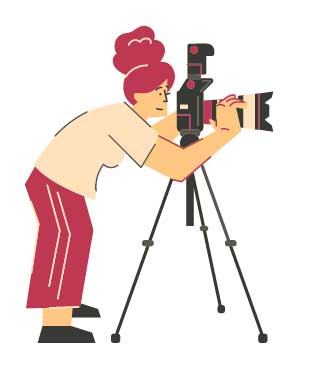
You will need a tripod to mount your camera. The tripod will ensure that the camera stays in the same place during the whole test.
Take out the camera lens which you want to test. Attach it to the camera body. Mount your camera and lens on the tripod.
There are two ways to do this test.
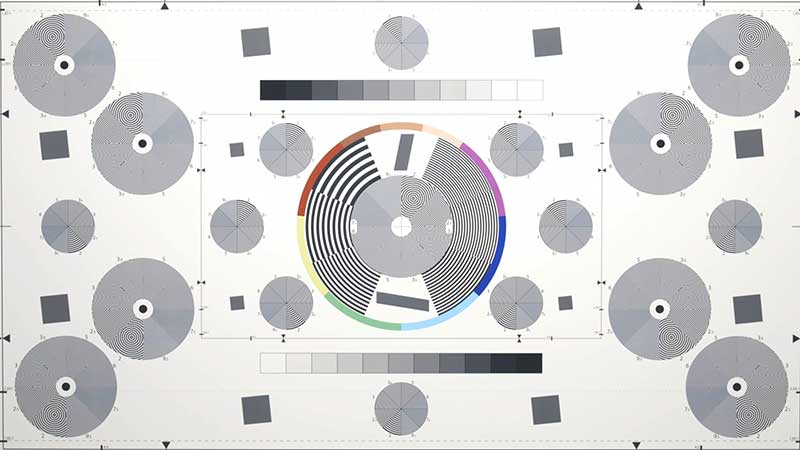
👉🏻 You can either make use of the lens testing chart as the subject.
👉🏻 Otherwise, you can take any subject of your choice. Make sure to select a non-living subject. It will be good if you go for a subject with a flat surface that has some writing on it. You can even use any book or newspaper as the subject.
If you are shooting this outdoors, make sure that there is no movement on the subject due to wind. We want the subject to be in the same position during the entire test.
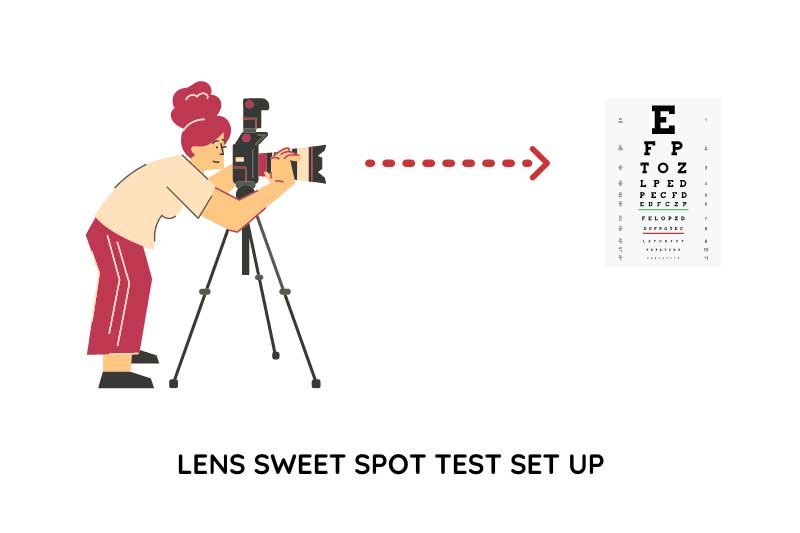
Position your subject at least 10 feet away from your camera. Also, make sure that the front of the camera is parallel to the subject. It is to avoid unnecessary blur when you shoot at large apertures.
It is good to use a remote trigger for this test.
Sweet Spot Test 😎
1. Turn on the “Aperture Priority mode” in your camera. It is best to shoot in this mode. You just need to set the aperture value and the camera will take care of the exposure.
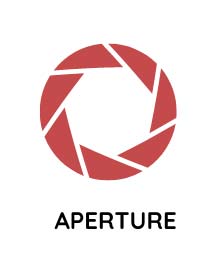
2. Now, select the largest aperture supported by your camera lens (smallest f-number).
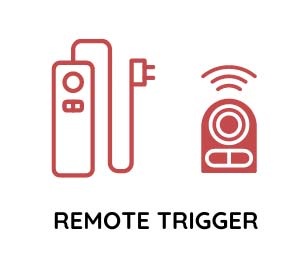
3. If you have a remote trigger, connect it to the camera for triggering the shots. If you don’t have one, use the timer mode and set the timer to 2 seconds. It is to avoid the camera shake.

4. Use the Auto Focus on your camera to get the focus locked on your subject. Once the focus is locked, capture the image.
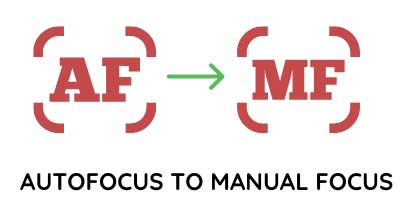
5. Now, you need to switch from Autofocus (AF) to Manual focus (MF) in your camera lens. It is to ensure that the focus point remains the same during the entire test. If you use autofocus for all shots, there is a chance that the camera may accidentally switch focus to some other parts of the subject. We want to avoid it.
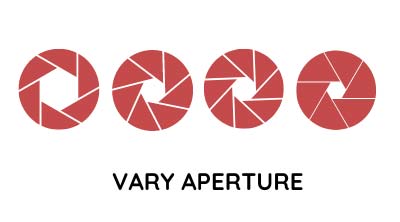
6. Now, select the next aperture and capture another image. Like that, you need to continue capturing images with all the aperture values supported by the camera lens. But you don’t have to cover the entire aperture range of the lens. You can stop the capture at f16.0.

7. Connect your camera to the computer and copy all the captured images. Open any image viewer or photo editing software like Adobe Lightroom.
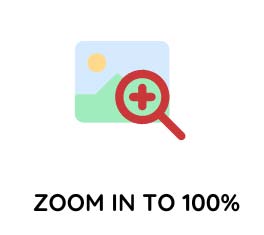
8. Open and zoom each photo to 100 % and compare the sharpness with other pictures. Continue this process till you find the photo with the sharpest detail on the subjects. The aperture value at which the image appears sharpest when zoomed in 100% will be the sweet spot of your lens.

NOTE: When you compare images, you may find some out-of-focus regions in certain pictures, images that are photographed with large aperture. Please don’t consider this out of focus regions. Only consider the focused areas in the image when you compare the sharpness. When you compare the picture captured at f16.0 with the picture at f2.8, there will be more out-of-focus areas in the f2.8 shot.
How to Find the Sweet Spot of a Zoom Lens?
When it comes to a zoom lens, the sweet spot will be different at different focal lengths.
There are two types of zoom lenses.
You can get a zoom lens with a fixed maximum aperture value. Here, the maximum aperture value remains the same for the entire focal length range of the lens.
For such lenses, the sweet spot remains more or less the same at all focal lengths.
Certain zoom lenses come with a variable maximum aperture at different focal lengths. Here, the sweet spot will be different at different focal lengths.
In order to find the sweet spot, you can perform the sweet spot test on the smallest and the largest focal length. Thus, you will be able to find the exact value.
Do Sweet Spot Vary for Different Copies of the Same Lens?
When it comes to the sweet spot of your lens, you cannot rely on the aperture value based on someone else test results on a different copy of the same lens.
The sweet spot (sharpest aperture) does vary for different copies of the same lens model. So, you need to test your lens to find the exact sharpest aperture value of your lens.
Final Thoughts
Now, you know how to find the sharpest aperture of a lens. Perform this test for all your camera lenses. Note down the values. Next time, when you do photography, try to use these aperture values.
You may not be able to use these values in all situations. The choice of the aperture depends on many other factors like lighting conditions, depth of field, etc.

